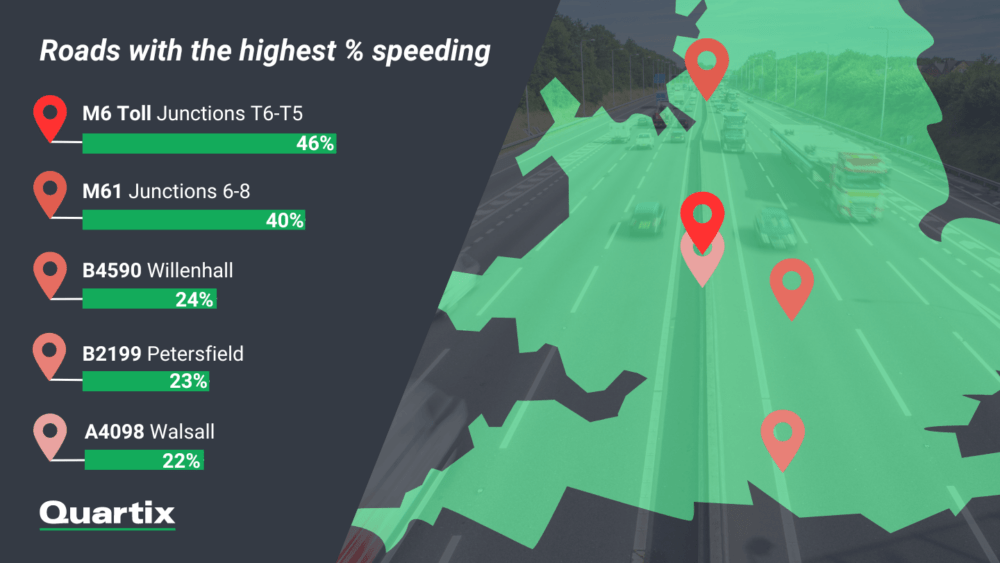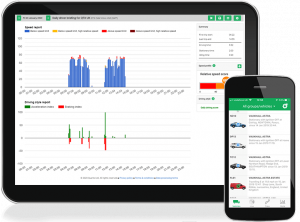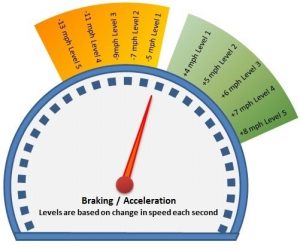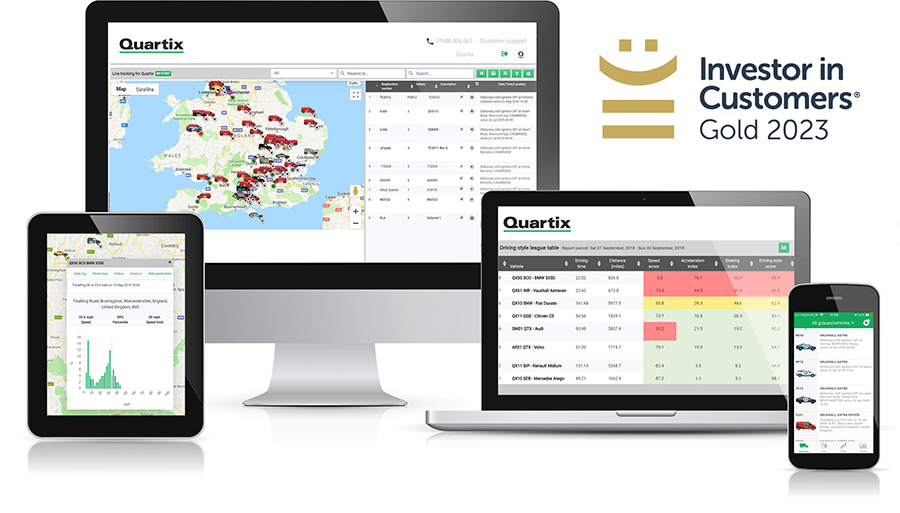An exclusive look at nationwide speeding trends
Speeding is a leading cause of collisions, injuries, and rising operational costs for businesses. With hundreds of thousands of tracked vehicles crisscrossing the UK every day, our vehicle tracking technology provides a unique view of driving behaviour on the nation’s roads. From busy motorways to quiet rural lanes, we analysed some of the 663 million anonymised data points within our SafeSpeed database to reveal where speed limits are broken most often.
UK speed hotspots: What the data shows
Our data highlights several key locations where speeding is particularly prevalent. Topping the list of the speediest road sections is the M6 Toll road, between the Tamworth and Burntwood junctions (T6 and T5), with 46% of traffic travelling above the 70mph speed limit.
Over 40% of traffic also exceeds the posted speed limit around the Horwich Interchange near junctions 6 and 8 of the M61. We analysed around 10,000 data points from these road sections over the last year. Higher speeds may be due to light traffic or road design encouraging faster driving.

While segments of major motorways like the M6 and M61 show the highest levels of speeding, smaller, lower speed A and B roads are not immune. In fact, certain sections of the roads listed below see over 20% of traffic exceeding their speed limit, highlighting the need for careful monitoring across all road types. When smaller samples of 1000-6000 data points are examined, these road sections emerge as being most prone to excessive speeds:
- B4590 in Willenhall, Walsall
- A4098 in Walsall
- B2199 in Petersfield, East Hampshire
- B2001 in the Isle of Grain, Kent
Notably in our sample, the speed limit was not exceeded on the following sections of roads. These road segments may have stricter enforcement, higher traffic volumes, or design features that successfully discourage speeding.
- M6 between junctions 21-26
- M621 between junctions 2-4
- M4 between junctions 24-26
- M42 between junctions 4-7
- A12 between 25-36 and 14-15
- A55 between junctions 15-16
Exceeding the speed limit is a key risk factor for road traffic collisions. However, the way that people drive also has an impact on safety, as does driving at an appropriate speed for the condition of the road. Ensuring we stay below the speed limit is one of many ways we can improve road safety.
Measuring driver behaviour and risk
Our vehicle tracking system helps over 35,000 businesses improve fleet safety, efficiency, and reduce costs by providing a comprehensive view of driver behaviour and vehicle use. It flags risky actions like speeding, fast acceleration and harsh braking, allowing businesses to take proactive steps. Individual driver scores identify those posing a high risk behind the wheel.
Quartix fleet tracking users can reduce speeding instances, collision rates and fuel economy across their business fleet by paying close attention to driver league tables, often incentivising improvements within their teams. One customer with a fleet of over 400 vehicles saw a 65% reduction in accidents, a 12% increase in fuel efficiency, and over £150,000 in maintenance savings within one year of using the system and implementing SAFED training.
Our unique SafeSpeed database adds a further measurement of safety – drivers are also scored against the average speed of other vehicles on the very same sections of road. This relative speed scoring is a valuable benchmark for rural roads, where it is often not safe to drive as fast as the posted speed limit.

Mark Cartwright, Head of Commercial Vehicle Incident Prevention at National Highways, highlighted the critical role of proactive safety management for mobile teams in an episode of our Fleet Insider podcast.
Businesses often focus heavily on health and safety in the workplace but overlook what happens on the road: “I think the kind of rich data that businesses can pull from systems such as Quartix is invaluable. I’ve always liked Quartix’s SafeSpeed feature. We know that speed is a significant cause of collisions and certainly makes them more serious” says Mark.
Considering that over half of UK motorway traffic consists of work-related journeys, proactively addressing these risks is essential. Mark urges businesses to also monitor driver fatigue, distraction, and fitness-to-drive, and manage these risks as part of their duty of care and health and safety responsibilities. Driving for Better Business offers several resources for further guidance.
Actionable insights to help businesses reduce speeding and risk
Any business with company vehicles should be aware of trends in high-risk driving behaviours. With our fleet tracking system, you know how to focus your efforts to successfully reduce risk in your organisation.

Address speeding issues directly
Offer targeted training to help drivers stay within speed limits and navigate roads more safely.

Improve speed compliance
Use tracking data to enforce safety measures and ensure compliance with speed limits across your company fleet.
Lower fleet expenses
Minimise collisions, fines, and vehicle maintenance costs by promoting safe, fuel-efficient driving behaviours among your staff.

Proactively manage risks
Address high-risk driving behaviours early to protect your team, vehicles, and others on the road.
By leveraging vehicle usage insights, businesses can significantly enhance safety, reduce operational costs, and protect their assets. Additionally, tracking your vehicles’ locations and activity helps save time and money, and improves overall service delivery. Learn more about the benefits of fleet tracking.
Start tracking your vehicles and team activity today



